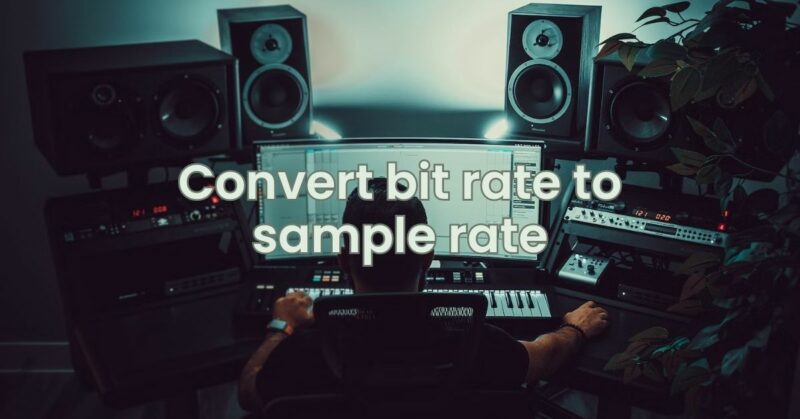In the realm of digital audio, two crucial parameters, bit rate and sample rate, play a significant role in determining the quality and characteristics of audio files. While bit rate measures the amount of data processed per unit of time, sample rate defines the number of audio samples taken per second during analog-to-digital conversion. These two factors are distinct but intricately connected. In this article, we explore the relationship between bit rate and sample rate and how to convert between these parameters in digital audio.
Understanding Bit Rate and Sample Rate:
- Bit Rate: Bit rate measures the amount of data processed or transferred per unit of time and is typically expressed in kilobits per second (kbps) or megabits per second (Mbps). In digital audio, bit rate signifies the amount of data required to represent the audio signal accurately. Higher bit rates generally result in better audio quality but also lead to larger file sizes.
- Sample Rate: Sample rate, expressed in Hertz (Hz), determines how many audio samples are captured per second during analog-to-digital conversion. It defines the precision of the digital representation of the analog audio waveform. Common sample rates include 44.1 kHz (CD-quality), 48 kHz, 96 kHz, and higher.
The Relationship Between Bit Rate and Sample Rate:
The relationship between bit rate and sample rate depends on the bit depth of the audio file. Bit depth quantifies the precision of the audio data and is measured in bits. For example, common bit depths are 16-bit, 24-bit, and 32-bit. Let’s explore the relationship based on these bit depths:
- For 16-Bit Audio: For 16-bit audio, each sample has a bit depth of 16 bits. Therefore, the bit rate can be calculated using the following formula: Bit Rate (kbps) = Sample Rate (kHz) × Bit Depth (bits per sample)
- For 24-Bit Audio: For 24-bit audio, each sample has a bit depth of 24 bits. The bit rate can be calculated using the formula mentioned above: Bit Rate (kbps) = Sample Rate (kHz) × Bit Depth (bits per sample)
- For 32-Bit Audio: For 32-bit audio, each sample has a bit depth of 32 bits. Once again, the bit rate can be calculated using the same formula: Bit Rate (kbps) = Sample Rate (kHz) × Bit Depth (bits per sample)
It’s important to note that bit rate only calculates the amount of data per unit of time, while sample rate determines the number of audio samples per second. Therefore, the relationship between these parameters doesn’t imply that one can be directly converted to the other. Instead, they both complement each other in defining the audio quality and file size of a digital audio file.
Conclusion:
The relationship between bit rate and sample rate is an essential aspect of digital audio understanding. While these parameters are interrelated and play vital roles in defining audio quality and file size, they are distinct in their definitions and applications. Converting between bit rate and sample rate involves considering the bit depth of the audio file, ensuring that both parameters are appropriately chosen to achieve the desired audio fidelity and file size for specific audio production or playback needs.


